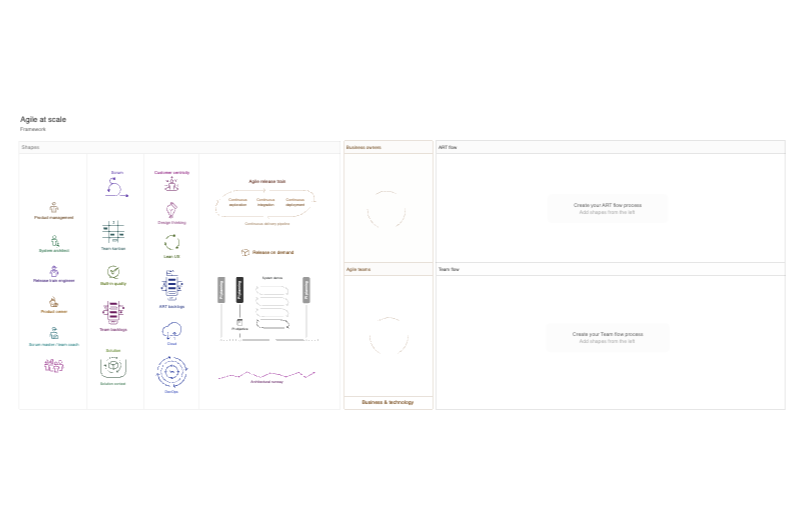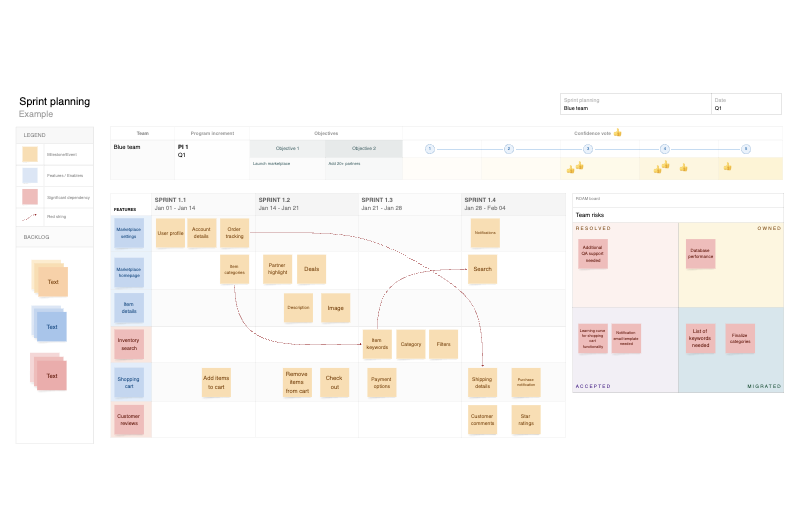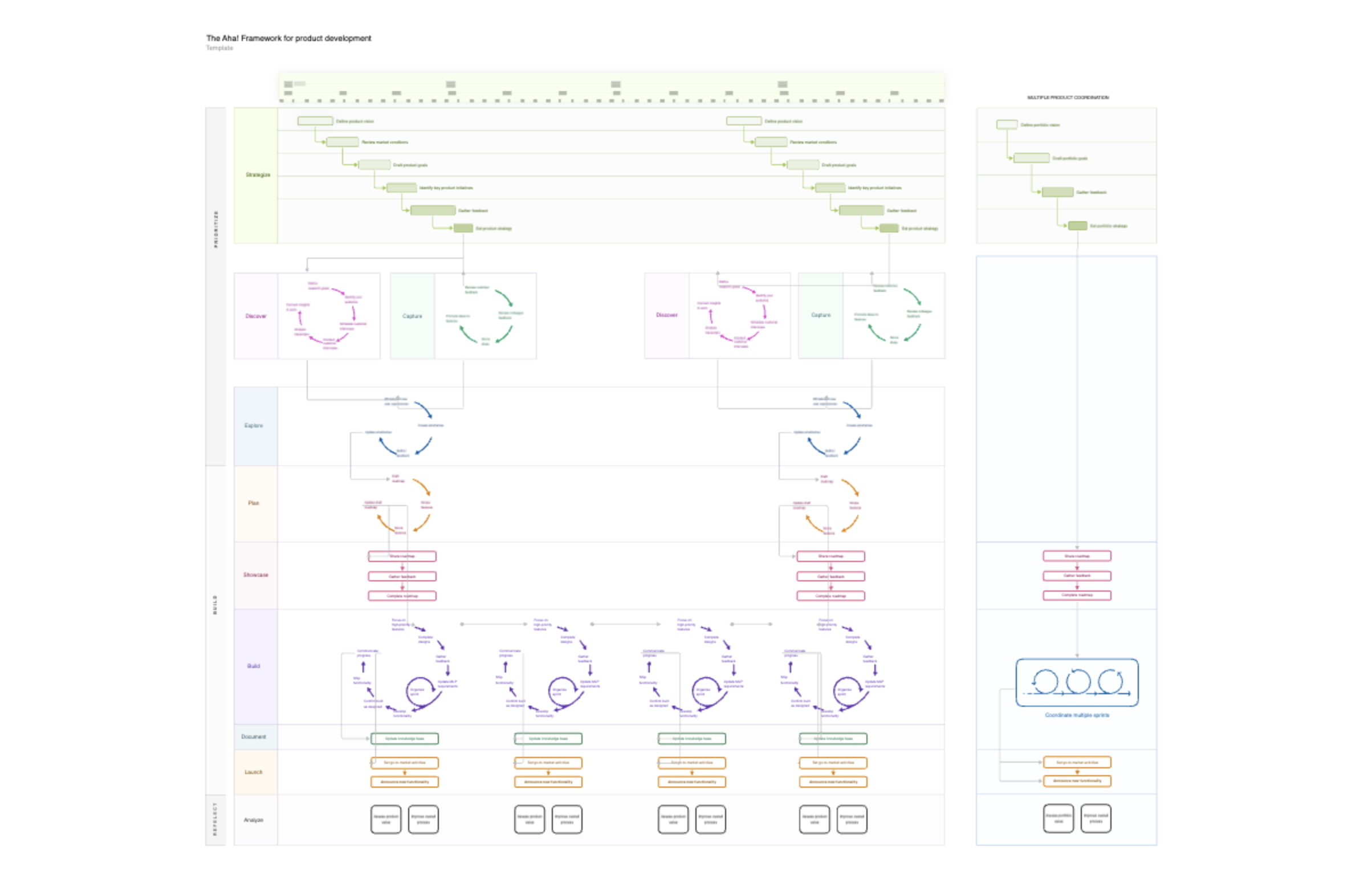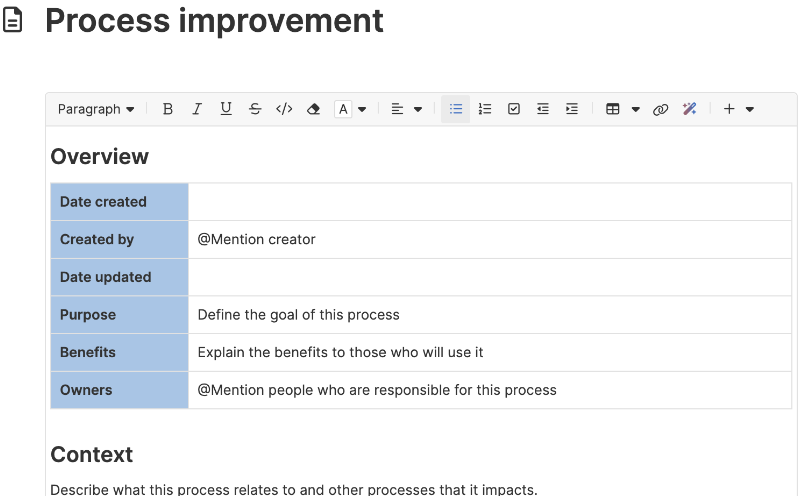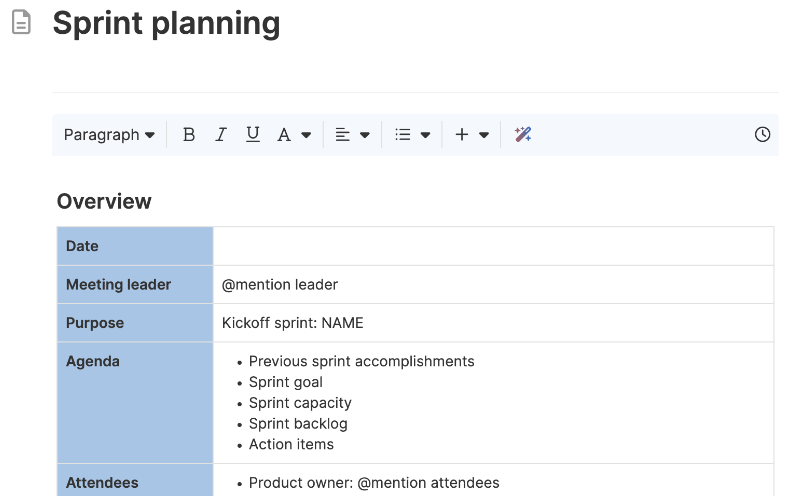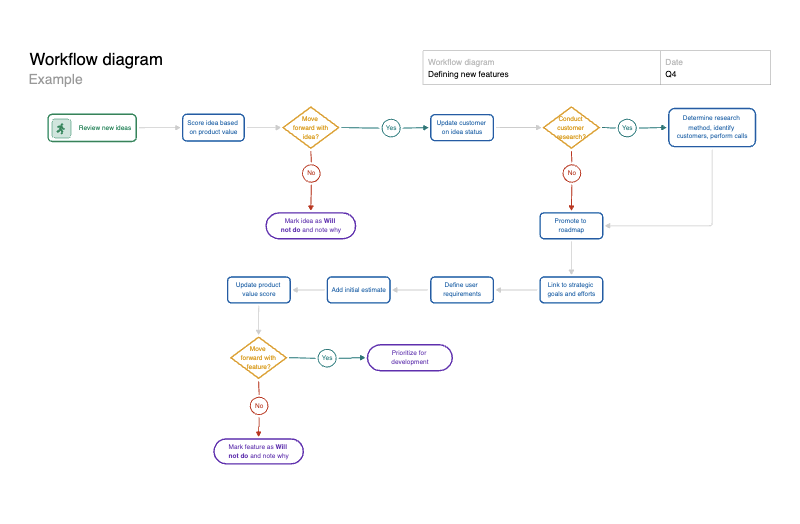Scrum framework template
Visualize how your team follows the scrum framework
Use template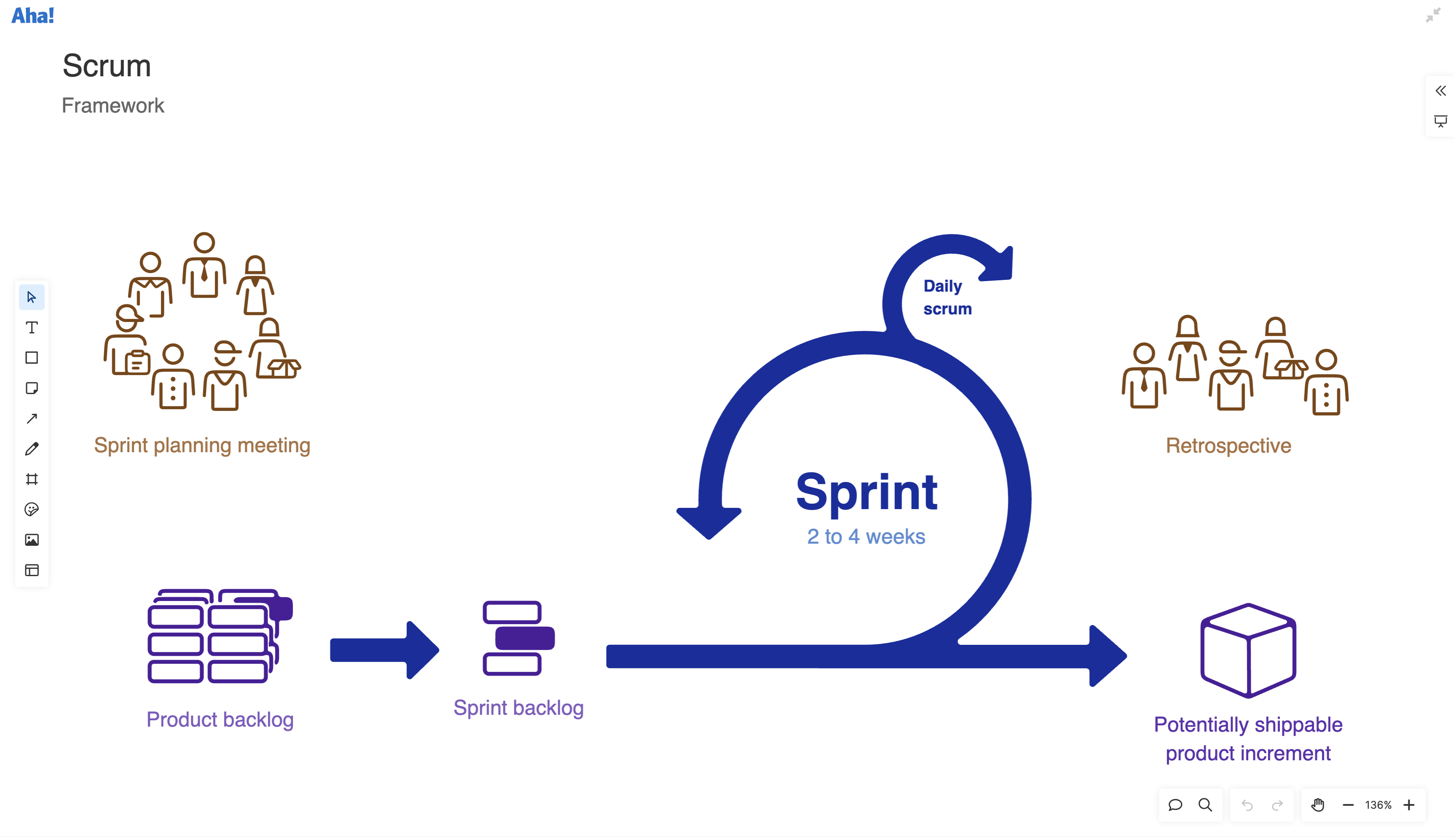
About the scrum framework template
Scrum is one of the most widely used agile frameworks. Teams use it to deliver work in focused sprints with shared ceremonies and roles. But in practice, few teams follow scrum exactly as the books and "scrumdamentalists" describe it. Most adapt it to fit their team dynamics, product complexity, and organizational realities.
This template helps you create a visual reference that shows how scrum actually works for your team — whether that includes extended sprint planning sessions, async daily standups, or extra QA steps that are not in the standard playbook. When everyone can see how scrum operates in your context, new team members onboard faster and stakeholders understand your delivery rhythm.
Of course, scrum is not the only option. You can also explore The Aha! Framework, our own model refined over the last decade, or create a custom framework to reflect how your organization works best.
Included in the scrum framework template
This scrum framework template includes:
A visual map of core scrum events with customizable steps and annotations
Shapes, labels, and callouts to capture team-specific adaptations
Pre-filled example with best practices for common variations
Inline comments to gather feedback and questions from teammates
A voting tool to build consensus on process changes
How to use the scrum framework template
Start by mapping your actual events and activities rather than the standard scrum template. Include everything that happens in your sprints — backlog refinement sessions, QA handoffs, release activities, or stakeholder demos that do not fit the traditional sprint review format.
Add specific details that make the diagram useful for your team. Note who attends each event, how you estimate work, what tools you use for each activity, and any recurring decisions that happen at predictable points. For example, document whether your daily standups happen asynchronously on certain days or how you handle dependencies with other teams.
Share the framework with teammates and invite them to highlight gaps or suggest improvements. Consider how people will use this diagram once it is complete — new hires during onboarding, stakeholders trying to understand delivery timelines, or the team during retrospectives when evaluating process changes.
Add it to your internal knowledge base in Aha! Knowledge so people across the organization have a consistent view of your process. You might also revisit the diagram quarterly in a retrospective to see if your workflow needs updating.
Best practices
Use the framework diagram as a tool for alignment and continuous improvement.
Document intentional deviations: Most teams modify scrum events or timing. Document these changes explicitly rather than pretending you follow the framework exactly.
Tie steps to ownership: Scrum roles can blur in practice. Note who leads each event and makes key decisions, especially when traditional roles do not match your org structure.
Show cross-team coordination: If multiple scrum teams work on the same product, document how they synchronize on dependencies, shared sprint reviews, or release planning.
Connect to actual tools: Map each event to your real systems — which backlog lives where, how boards are managed, where retrospective notes are stored — so the diagram guides daily work, not just theory.
FAQs about the scrum framework template
What should be included in a scrum framework diagram?
A scrum framework diagram usually shows sprint planning, daily scrums, sprint reviews, and retrospectives. Some teams also add backlog refinement, QA steps, or release activities. The value is in customizing it to reflect how your team actually works.
How can we adapt scrum to fit our team?
You might adjust sprint length, combine certain events, or involve additional roles like QA or design. This template helps you document those adaptations so everyone shares the same understanding.
What is the difference between a scrum framework and a kanban board?
A scrum framework shows the recurring events, roles, and decision points that structure your team's work. A kanban board visualizes current work items and their status. Many teams use both — the framework diagram explains the process, while the kanban board tracks specific tasks.
What is The Aha! Framework and how does it compare to scrum?
The Aha! Framework is our own team's flexible model for product development — refined over the past decade. It emphasizes linking strategy to delivery, so every activity ties back to company goals. Many teams use it as an alternative to scrum or adapt elements of both frameworks to create a process that works best for their organization.
Is this template free to use?
Yes. To use this scrum framework template, sign up for a free 30-day trial of Aha! Whiteboards. (You can also try this template in Aha! Roadmaps if you need a complete product management solution.) Easily customize the template to suit your needs, then share it with as many people as you want (for free) to streamline collaboration.
